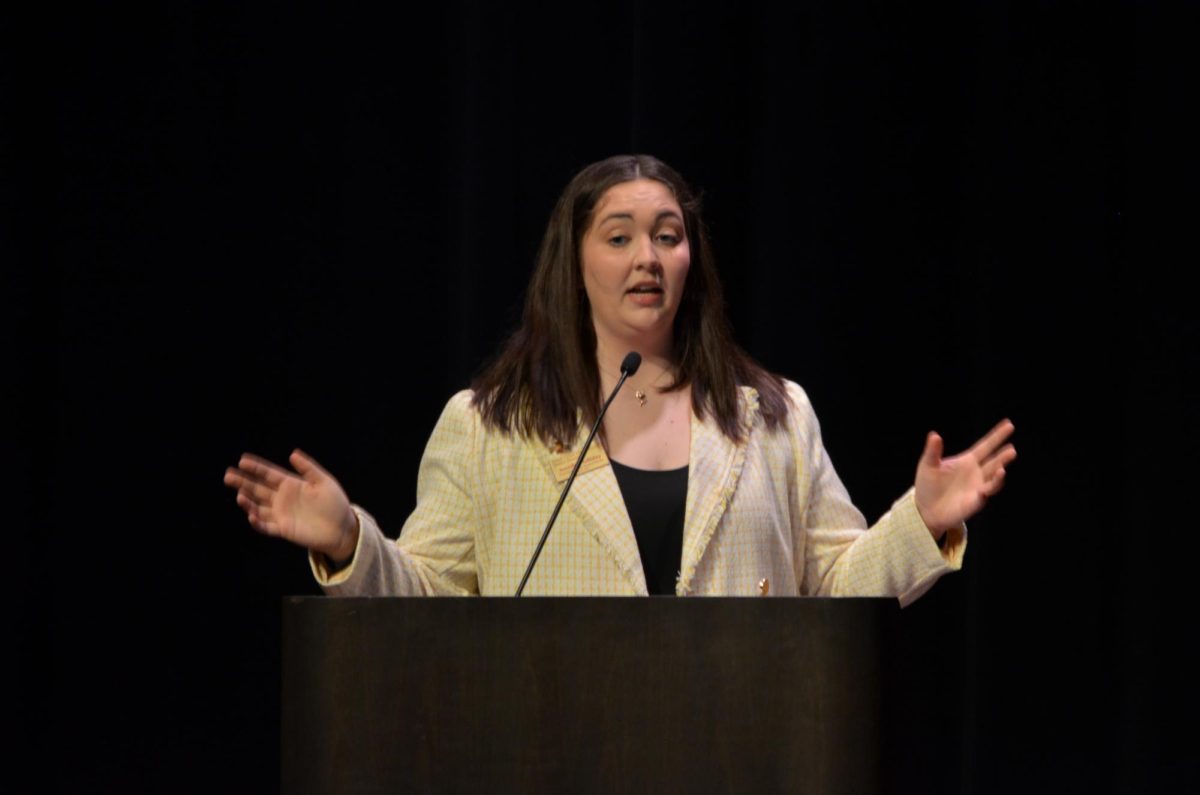Transition to digital to take effect in a year
February 18, 2008
In exactly 365 days, anyone who is still using rabbit ears on their television will pick up the remote, hit the power button and realize that, for once, there actually is nothing on TV.
That’s because on Feb. 17, 2009 (this is a leap year, remember?), all broadcasters are required by the government to switch from analog over-the-air signals to digital over-the-air broadcasting.
For people already using a cable or satellite service, there is no need for concern. However, those who are still accessing free analog signals will be required to take action if they want to continue watching television.
Although this issue has existed for more than a decade, most people have very little information about how to complete the switch to digital or what the differences will even be.
“This really all started with the Telecommunications Act of 1996,” said Jeffrey Blevins, assistant professor of journalism and communication.
“The government didn’t want our technology to lag behind countries like Japan, so they wanted to upgrade the way we communicate. But neither the [Federal Communications Commission] or broadcasters have done a good job of educating the public. They see a senior citizen on their screens telling them how easy it was to switch to digital, but never really find out what it is or how to do it.”
The biggest advantage to using the new digital signals is the ability to use multiplexing, a technique which allows the broadcast of multiple programs on a single channel. This, along with the lower bandwidth needs of digital broadcasting, will essentially give viewers access to more options for programming.
Even among students, who are normally among the most up-to-date people regarding technology, there is some confusion about the purpose of the switch.
“I don’t really know much about the switch to digital signals. My dad explained it to me once, but I never really saw anything in their warnings to tell me what it’s all about,” said Jacob Saltzman, junior in psychology. “As far as I can tell, it’s going to make the signals clearer for the public and free up analog airwaves for probably government broadcasts and announcements.”
There is still speculation about what the analog frequencies could be used for after the switch. One idea that has been floated is that service announcements and emergency updates could be broadcast on them in order to quickly alert the public.
“It has so many political implications that go along with people trying to create an advantage for their side,” Blevins said. “Especially after events like [Hurricane] Katrina, there has been a lot of discussion about how they could use analog broadcasting to relay messages to get news out faster.”
Unfortunately for consumers, most of the investment has been on the broadcasters’ side, with relatively little help going to the people who will need to switch. They hear their televisions will become obsolete and assume they’ll have to buy a new set. Luckily, for those who don’t have the resources or desire to purchase a television with digital compatibility, there will be a converter available for older analog sets – for an undecided price.
“I’m not really looking forward to having to pay for the ability to watch ‘free’ television,” Saltzman said. “I think our TV is already digital-compatible, but it still seems ridiculous that the government is making us pay for something that broadcasters always provided for free.”
The converter has become somewhat of a contentious issue among consumers. People not wanting to pay for cable and satellite services have taken advantage of free broadcasting and must now pay to continue using that service.
“Most likely, it will cost around $100 to $200 to get a converter that will hook up to the back of your television and automatically change the digital signals so analog sets can play,” Blevins said.
The 2009 switch is expected to take a minor toll on American’s pocketbooks. However, a coupon good for a $40 rebate can be applied for online at www.dtvtransition.org. Each household will be eligible for two coupons.
What to know about the 2009 conversion
What: Broadcasters will be required by government to switch from analog to digital programming.
When: Feb. 17, 2009
Why: The government wants to stay up-to-date with other countries in technology and communication.
How it will affect you: Your TV will need to be digitally compatible. Digital televisions and converters will start to become more widely available.
Coupons: At www.dtvtransition.org, you can apply for coupons good for $40 rebate on your convertor or digital television purchase. Each household will be eligible for two coupons.
Cost: The first convertor boxes went on sale Sunday, and although estimated prices were between $100-$200, Best Buy’s price for the Insignia model was $60 before coupon use.
















